When it comes to creating a bee-friendly garden, make sure you have plenty of flowers that encourage bees to come to visit your garden. And understanding the types of bees you are looking to attract can help you understand how to create the perfect habitat for them.
Whether you’re looking to make a bee-friendly garden or you’re looking for other awesome wildlife ideas, you’ll find all you need to know right here. Not only is a bee garden a great way to spruce up your own garden, but it’s also essential when it comes to helping with the conservation of bees.
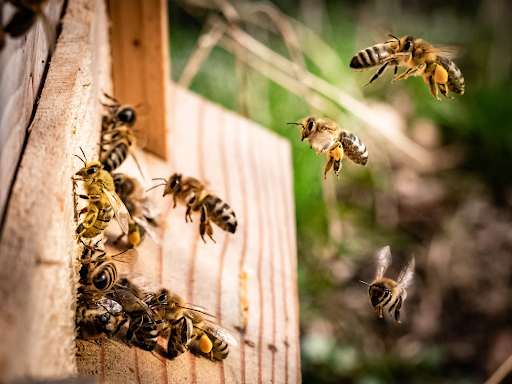
Photo by Kai Wenzel on Unsplash
How To Attract Pollinators
Attracting pollinators to your garden is easier than you may think. Using bee-friendly flowers, creating a place for them to pollinate, and offering ample water are some of the ways to begin to attract pollinators to your garden.
Contrary to popular belief, you can find bees all year round, so it’s important to seek out plants that flower at different times of the year. In the UK, we get plenty of damp weather – therefore, finding plants that you can grow in shady spots is also important for attracting bees.
Alongside flowers, creating shelter for pollinators in your garden is important, especially due to the ever-changing weather conditions. Providing shelter helps to keep the bees alive and provides somewhere for them to nest. It is important that bees have access to this, all through their entire life cycle.
Creating a Habitat For Bees
When creating a habitat for bees there are some important things to consider, such as nesting material, flowers, and water. The most important part of any bee habitat is access to at least two types of bee-friendly flowers each flowering season. By planting these, you’re making sure that there’s always a good amount of pollen in your garden.
Equally as important, though, is water. Bees require regular water and without this, they can become quite ill. Making sure there is water around for the bees to enjoy is ideal.
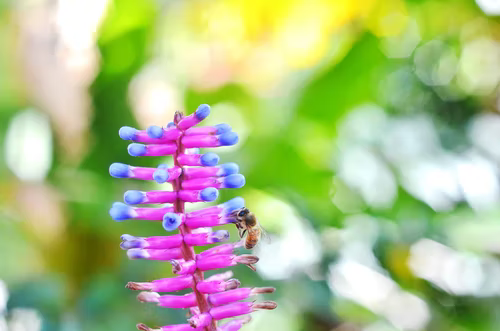
Designing a Bee Garden
Regardless of the size of your garden, bees can live happily in a place that offers a few key elements, these are:
- Access to water
- A garden where pesticides aren’t used
- A sheltered
- Somewhere with plenty of flowers and plants for bees to enjoy
- Bee-friendly flowers in colour blocks
Most bees are ground-nesting, therefore, providing them with bare patches of soil in a sunny location is ideal habitat for them. Although this isn’t the prettiest bee garden, it provides the bees with a great sense of happiness.
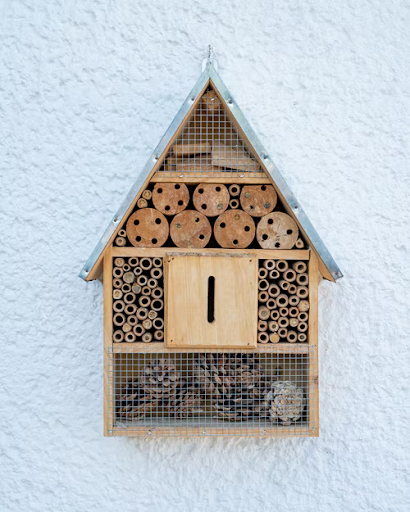
Photo by Mika Baumeister on Unsplash
How to build a bee hotel
If you are looking to create a bee hotel for your garden this can be done using leftover materials from previous projects. Think about using an old draw or pieces of wood which you have laying around. To make a bee hotel, here are some essential things you need to consider:
- A sloped roof is a must in a bee hotel as it deflects the rain from the roof
- Use lots of small logs or blocks of wood with holes in them – this allows bees to use them as nesting sites
- Your hotel requires a solid back to give it protection from the rain and wind
- Do not use any varnish or wood treatments on your bee hotel as it may deter any bees
- The size of your bee hotel should be a minimum of 20cm (8 inches) in depth
To create the bee hotel:
- Simply attach 3 pieces of wood together with nails into a box shape with an open front.
- Follow this by adding a roof on top, this can be hammered into place.
- Then fill the box with small logs or blocks of wood with holes in them.
- Finally, attach it against a wall or tree or, alternatively, if you want this to be freestanding, attach an additional piece of wood to the back.
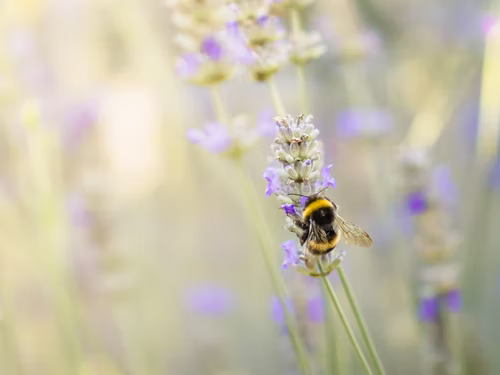
Photo by Jamie Street on Unsplash
Choosing Plants That Attract Bees
There are plenty of plants that attract bees, but whether your garden is subject to a lot of sun or it’s mostly in the shade will affect which plants you choose. It’s important to consider planting your flowers in colour blocks as this can help bees locate the flowers they are currently foraging for. Make sure you have plants for Spring, Summer and Autumn as bees require them throughout the year. If you’re unsure which plants to put in your bee garden, here are some options to consider:
Plants for Spring:
- Hellebore
- Comfrey
- Winter heather
- Crocus
- Pieris
- Dicentra
Plants for Summer:
- Wild strawberry
- Monkshood
- Borage
- Foxglove
- Lavender
- Geraniums
Plants for Autumn:
- Catmint
- Ground ivy
- Mahonia
- Sunflower
- Cosmos
- Honeysuckle
- Verbena
If you are looking for an alternative to flowers, bumblebees also love fragrant herbs, including, thyme, sage, chives, and mint.
Limiting The Use of Insecticides
After creating a bee-friendly garden, you need to be sure to avoid using insecticides. Not only are these extremely harmful for the bees that encounter them, but also for the rest of the colony. Even low doses of insecticides can be detrimental to their wellbeing. Insecticides can also be known as bug killers and are used to kill, harm or repel certtain species of insects.
Help a Bee In Need
If you notice a bee on the ground, it’s easy to presume that it’s dying, but the chances are it may just require a quick pick me up. This can be provided via sugar water. You can help a bee in need by creating a mixing together two tablespoons of white sugar and one tablespoon of water. Then place the solution next to the bee and allow it to drink. Once it has drunk all the sugar water, the bee should then be able to fly away.
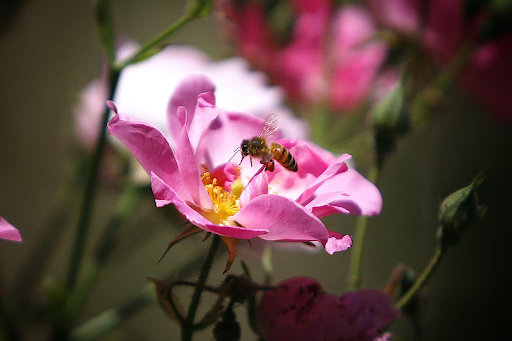
Photo by Aaron Scamihorn on Unsplash
The Round-Up
When it comes to helping bees, the size of your garden doesn’t matter. You can create a bee garden simply with some soil in a planter or by planting some of the flowers that attract bees. And actively taking care of the bees is important for the future of bee conservation. It also makes for a rewarding project which everybody can get involved with. We hope you’ve found this guide useful and now know how to make a bee-friendly garden.

